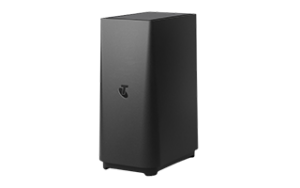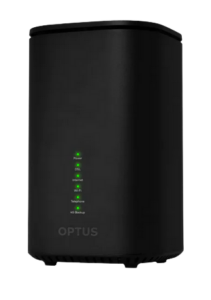Optus Mobile Review ALDI Mobile Review Amaysim Mobile Review Belong Mobile Review Circles.Life Review Vodafone Mobile Review Woolworths Mobile Review Felix Mobile Review Best iPhone Plans Best Family Mobile Plans Best Budget Smartphones Best Prepaid Plans Best SIM-Only Plans Best Plans For Kids And Teens Best Cheap Mobile Plans Telstra vs Optus Mobile Optus NBN Review Belong NBN Review Vodafone NBN Review Superloop NBN Review Aussie BB NBN Review iiNet NBN Review MyRepublic NBN Review TPG NBN Review Best NBN Satellite Plans Best NBN Alternatives Best NBN Providers Best Home Wireless Plans What is a Good NBN Speed? Test NBN Speed How to speed up your internet Optus vs Telstra Broadband ExpressVPN Review CyberGhost VPN Review NordVPN Review PureVPN Review Norton Secure VPN Review IPVanish VPN Review Windscribe VPN Review Hotspot Shield VPN Review Best cheap VPN services Best VPN for streaming Best VPNs for gaming What is a VPN? VPNs for ad-blocking We sat down for a chat with NBN Co representative Sam Dimarco to discuss the analysis and get more info on the most common in-home issues, and your best options for overcoming them.
Positioning and placement: The in-home analysis from NBN Co found that a leading issue was due to the positioning and placement of NBN modems, modem-routers and routers in the house. Out-of-date firmware: NBN Co claims that one of the most common problems is out-of-date firmware on provider-supplied modems. Channel interference: NBN Co says that channel interference is a leading factor in speed-related issues, particularly in multi-dwelling complexes like apartment buildings.
Let’s take a closer look at the most straightforward ways to tackle these key issues. Changing channels isn’t particularly straightforward, but it does offer automatic channel selection, meaning it should always seek out the channel with the least interference. Where the previous Optus Ultra WiFi Modem lacked WiFi 6, this one has it. You can connect devices to the modem via the next-generation wireless standard or via the four Ethernet ports on the back of it. It’ll cost you $109.95 upfront (including shipping), but then it’s yours to keep and use. Check out the TPG NBN 50 plan below for an example: For starters, an NBN modem may be called an NBN network termination device (NTD) or NBN connection box (or just NBN box for shortsies). An NBN modem may also be shorthand for a modem-router, as is the case with homes connected to the NBN via Fibre-to-the-Node (FTTN) and Fibre-to-the-Building (FTTB) technologies. Whether it’s a single device (modem-router) or two devices (modem and router), these pieces of networking equipment are key to getting you online and aiding a reliable connection. If possible, elevate your router or modem-router, ideally, about two metres off the ground. The idea is to get the modem-router or router above potential interfering objects. This means keeping it as clear as possible of thick walls, fish or other water tanks, radio-wave electronic devices, kitchen and laundry appliances and mirrors. That’s not always possible, which is when routers or modem-routers with stronger WiFi signals are worth considering or a mesh WiFi system for whole-home coverage. Note that for NBN technologies that have an NBN modem/NTD/connection box, the placement of this bit of networking equipment isn’t as important as the NBN-compatible router that’s connected to it. Below is a list of NBN technologies and which networking equipment they use to get online (note that the NBN modem should be supplied by NBN Co):
Fibre-to-the-Premises (FTTP): NBN modem + router Hybrid Fibre Coaxial (HFC): NBN modem + router Fibre-to-the-Curb (FTTC): NBN modem + router Fibre-to-the-Building (FTTB): NBN modem-router Fibre-to-the-Node (FTTN): NBN modem-router Fixed Wireless NBN: NBN modem + router NBN Sky Muster satellite : NBN modem + router
It’s also worth flagging that while you can supply your own router or modem-router with most NBN providers, the trend is for most NBN providers to offer modem-routers, which means they work with all NBN technologies: as modem-routers for FTTB and FTTN connections, but only use their routing functionality for all other NBN technologies. Unless you’re particularly tech-savvy when it comes to networking equipment, we’d advise starting with whatever is included or sold optionally from your chosen NBN provider. Admittedly, these devices aren’t always cutting-edge, but what they may lack in whiz-bang features, they make up for in proven compatibility and reliability. More importantly, if things go wrong and you need to contact your provider for tech support, it’s easier for them to help you if you’re using the recommended networking equipment. With that in mind, let’s take a look at some of the NBN modem-routers and routers included with particular provider plans or sold separately from providers. NBN Co estimated that 16% of all NBN-connected broadband customers have experienced dissatisfaction with their download speeds. This estimate was extrapolated from the results of the company’s in-home analysis, which showed that 20% of the 780 premises analysed experienced speed-related issues. Of the issues identified in NBN Co’s sample study, 53% were on the premises, 11% between the premises and the node, 9% of issues were due to a planning error on NBN Co’s behalf, 8% were lead-in issues, and 6% were due to a bad joint. It’s the on-premises issues where NBN Co decided to point its focus. To an extent, the issues found were out of its control. If you have an NBN modem that came from your provider and you’re experiencing issues, get in touch with them about updating the firmware on your NBN-compatible modem-router or router. Thankfully, there’s a handful of NBN-compatible modem-router and router manufacturers that understand this problem. To help bridge the knowledge gap, they offer automatic firmware updates on their modems. So long as the modem connects to the internet, it will automatically update and install the latest firmware patches, so you never have to think about it. The Telstra, Optus and TPG modem-routers listed above all sport automatic firmware updates, controlled by the respective providers. These updates tend to roll out in the wee hours of the morning, so it’s best to leave your networking equipment on overnight. For other NBN modem-routers and routers, check with the supplier to see if the device has automatic firmware updates or a companion app that makes firmware updates incredibly straightforward. That said, for under $550, you get what amounts to three routers to place around your home where you most need a sturdy broadband connection. It’s also expandable so if you’ve got an exceptionally large house, so you can keep expanding with “points” ’til the cows come home. Additional points cost around $270. There’s a decent saving on the three-pack so if you’ve got the space for it; we’d recommend buying in bulk. If you’re an Aussie Broadband customer or want to be one, you can reach out to them to purchase a Google Nest WiFi system (one router, a router and a point, or a router and two nest points), or just add it to your order when you sign up. Below is a daily updating list of popular Aussie Broadband NBN plans where you can add a Google West WiFi system: NBN Co focused its analysis on multi-dwelling residences and found the channel congestion was particularly bad in buildings where there was a high concentration of customers signed up to a single provider. Just like firmware updates, we’d wager most Australians don’t know how channel congestion works or how to manually switch channels if there’s a bottleneck in your building. Dual-band routers and modem-routers are standard these days, offering the choice of a farther-reaching but slower 2.4GHz band or a faster but shorter-reaching 5GHz band. Tri-band modems are more advanced and tend to cost more, but if you’re really struggling with congestion, they could be your best option. Alternatively, chat with your provider or networking equipment supplier about how to switch WiFi channels. By default, a lot of wireless devices tend to operate on the same channel, which can cause interference. For the 2.4GHz band, the recommended channels are 1, 6 and 11. For the 5GHz band, the best channels to consider are 36, 40, 44 and 48. First, isolate whether the internet woes are with a specific device or the entire network. If it’s one device, focus on that: restart and update for starters. If it’s every device in your home, go look at your modem, router or modem-router to see if there are any red or orange lights to indicate problems, which applies whether you’re with Telstra or any other provider. Taking note of these lights will help with troubleshooting problems when you speak to your provider. Cabling can also be an issue, whether it’s in-home wiring that’s trickier to fix (especially if you’re renting), or loose/damaged cabling. For instance, a loose telephone cable for FTTC, FTTB and FTTN connections may lead to slow or no internet. Similarly, an older or damaged Ethernet cable may restrict speeds to a wired device. You’d be surprised at how many issues can be fixed by securing or upgrading cables, or just by power cycling networking equipment. When power cycling, start from the outside in: modem or modem-router first, then any other equipment, including a router or networking switch. Power off all networking devices, then leave them off for at least 30 seconds, before powering them back on in the same order: modem or modem-router, then everything else. You can also perform an NBN isolation test, which is effectively a more involved NBN speed test. NBN 100 is the fastest NBN speed tier available to most homes in Australia, which has download speeds of up to 100Mbps and 40Mbps upload speeds (most cheaper plans are sold with max 20Mbps upload, though). Check out the daily updating list of NBN 100 plans below, which are organised in terms of self-reported typical evening download speeds:



![]()
![]()